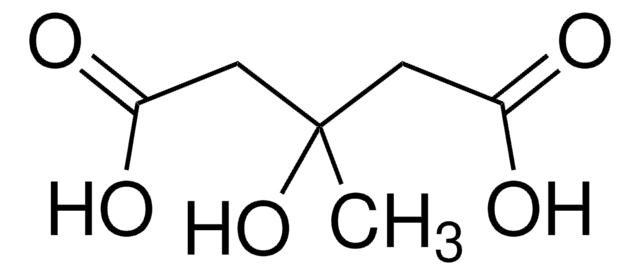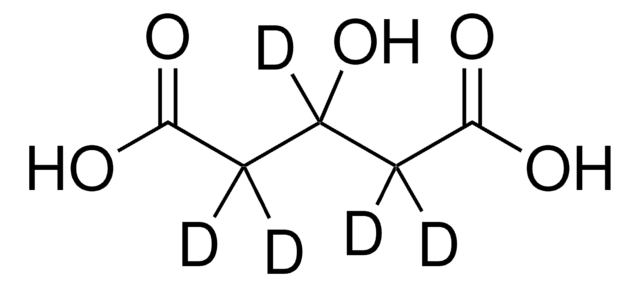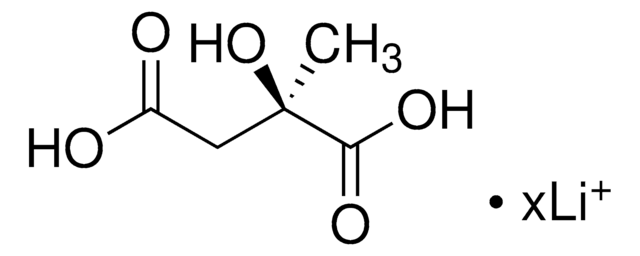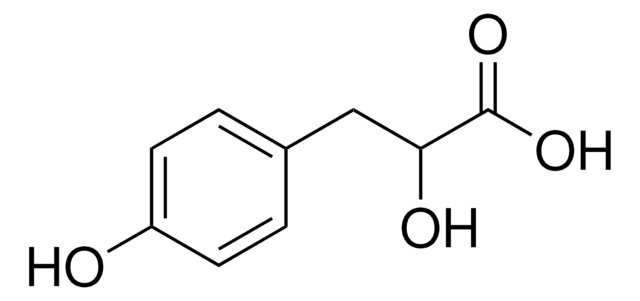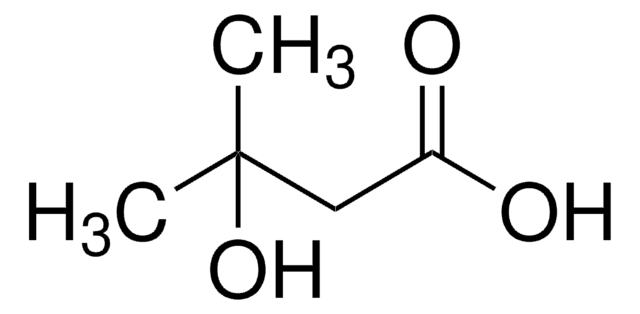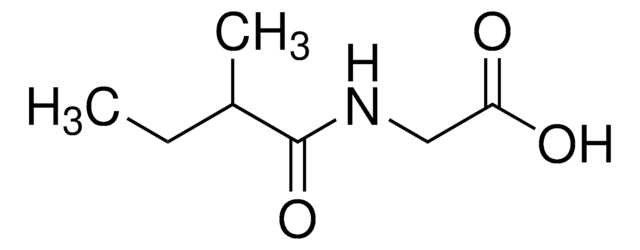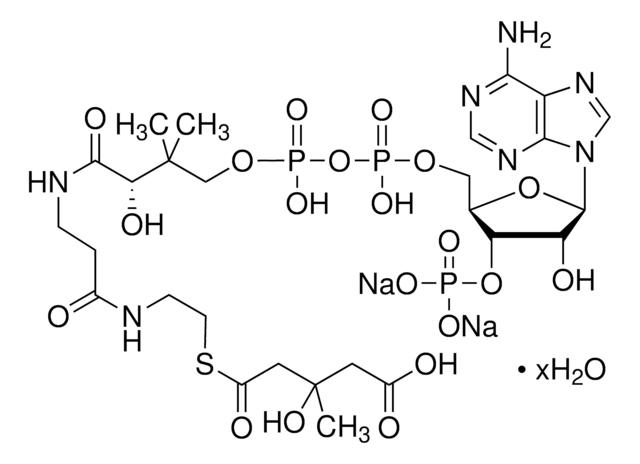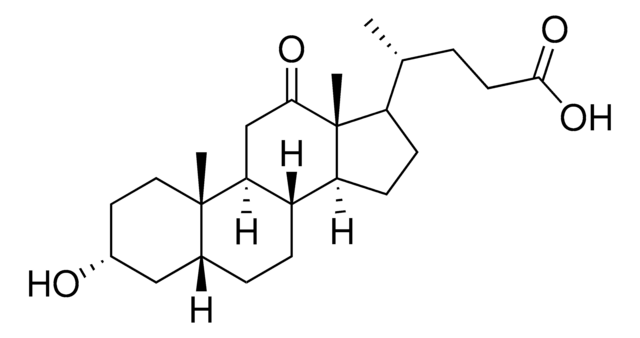44108
(E)-3-Methylglutaconic acid
≥97.0% (HPLC)
Synonym(s):
(2E)-3-Methyl-2-pentenedioic acid
Sign Into View Organizational & Contract Pricing
All Photos(1)
About This Item
Empirical Formula (Hill Notation):
C6H8O4
CAS Number:
Molecular Weight:
144.13
Beilstein:
1722909
MDL number:
UNSPSC Code:
41116107
PubChem Substance ID:
NACRES:
NA.24
Recommended Products
Quality Level
Assay
≥97.0% (HPLC)
mp
137-143 °C
application(s)
clinical testing
format
neat
storage temp.
2-8°C
InChI
1S/C6H8O4/c1-4(2-5(7)8)3-6(9)10/h2H,3H2,1H3,(H,7,8)(H,9,10)/b4-2+
InChI key
WKRBKYFIJPGYQC-DUXPYHPUSA-N
Biochem/physiol Actions
3-Methylglutaconic aciduria (MGCA) is a group of metabolic disorders characterized by increased urinary excretion of 3-methylglutaconic acid and 3-methylglutaric acid. Five distinct forms of MGCA have been recognized. MGCA type 1 is caused by primary deficiency of the mitochondrial enzyme 3-methylglutaconyl-CoA hydratase (3-MGCH), resulting in a block of leucine degradation. In all other types, the activities of 3-MGCH and other enzymes of leucine degradation are normal and the MGCA is thought to be secondary to a defect in another pathway. MGCA type 2, also known as Barth syndrome, is an X-linked cardiomyopathy associated with skeletal myopathy, neutropenia, and growth retardation. MGCA type 3, also referred to as Costeff optic atrophy syndrome, is an autosomal recessive disorder caused by mutations in the gene OPA3. It is characterized by early-onset bilateral optic atrophy, later-onset extrapyramidal dysfunction. MGCA type 5 caused by mutation in the DNAJC19 gene, is characterized by early-onset dilated cardiomyopathy with conduction defects, nonprogressive cerebellar ataxia, testicular dysgenesis, and growth failure. MGCA type 4 is the unclassified type, which includes all other patients with MGCA.
Signal Word
Warning
Hazard Statements
Precautionary Statements
Hazard Classifications
Eye Irrit. 2 - Skin Irrit. 2
Storage Class Code
11 - Combustible Solids
WGK
WGK 3
Flash Point(F)
Not applicable
Flash Point(C)
Not applicable
Choose from one of the most recent versions:
Certificates of Analysis (COA)
Lot/Batch Number
Don't see the Right Version?
If you require a particular version, you can look up a specific certificate by the Lot or Batch number.
Already Own This Product?
Find documentation for the products that you have recently purchased in the Document Library.
Solution of a classical problem. Tautomerism and isomerism in the α-methylglutaconic acid series
Kagan, J., et al.
The Journal of Organic Chemistry, 40, 3085-3093 (1975)
Metabolic profiling of urinary organic acids by single and multicolumn capillary gas chromatography.
M F Lefevere et al.
Journal of chromatographic science, 27(1), 23-29 (1989-01-01)
High-resolution gas chromatography (HRGC) and gas chromatography/mass spectrometry (GC/MS) are the techniques of choice to determine the retention indices of more than 200 organic acids as their trimethylsilyl (TMS) or oxime-trimethylsilyl derivatives. Several types of apolar and semipolar fused-silica capillary
M Fontaine et al.
Clinica chimica acta; international journal of clinical chemistry, 255(1), 67-83 (1996-11-15)
We report clinical and biological investigations in two patients (twin brothers) with 2-methylacetoacetyl-CoA thiolase deficiency. Main clinical features included important staturo-ponderal delay, frequent infectious rhinopharyngitis episodes and an acute metabolic acidosis at the age of 4 years, this metabolic decompensation
M Duran et al.
Biomedical mass spectrometry, 9(1), 1-5 (1982-01-01)
The identification of (E)-2-methylglutaconic acid, a 'new' metabolite of isoleucine, is described. The substance was detected in urine samples from patients with propionic acidaemia, methylmalonic acidaemia and so-called beta-ketothiolase deficiency; in the majority of cases together with N-tiglylglycine. (E)-2-Methylglutaconic acid
Our team of scientists has experience in all areas of research including Life Science, Material Science, Chemical Synthesis, Chromatography, Analytical and many others.
Contact Technical Service